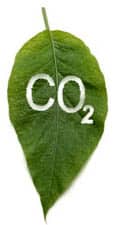Albert Einstein is supposed to have said that everything should be as simple as possible, but no simpler. I try to follow that rule in my writing, especially when discussing complex scientific matters. I try, but I don’t always succeed. Fortunately, there are many knowledgeable C&C readers who can set me straight.
A case in point: in my book Facing the Anthropocene, I unwisely attempted to explain one part of the enormously complex global carbon dioxide cycle in just two sentences. That was oversimplification, and as punishment, I got it upside down and backwards.
This morning, oceanographer and climatologist Bob Newton wrote to explain why my two-sentence explanation of the global CO2 cycle was wrong. He has given me permission to publish his letter.
| Dear Ian:
I’m working my way through your book, Facing the Anthropocene. Great book; very nice work. But I came across this paragraph: “When the atmosphere’s temperature rises, the oceans can absorb more CO2, which means that there is less CO2 in the atmosphere, so more heat escapes, and the atmosphere cools. When the atmosphere’s temperature falls, it absorbs more CO2 from the oceans, and the atmosphere warms. Over millions of years, this cycle has kept Earth from becoming like Mars or Venus, too cold or too hot.” (pages 122-3) I don’t think that gets the feedback right. The ocean holds about 52 times more CO2 than the atmosphere and is, depending on some subtleties like temperature and pH in the surface mixed layer, near saturation. The atmosphere is subsaturated at all relevant temperatures and at all concentrations seen in the quaternary. So the exchange is set from below: depending on the temperature and changes in temperature in the surface ocean. Also: most (like about 80%) of atmospheric warming or cooling is from below. Light penetrates to the ocean, which warms and warms the air, either by direct heat conduction or by the latent heat of evaporation. So again: the change starts in the surface ocean. As the surface ocean warms the balance tips toward emitting more CO2, causing more warming — a positive feedback. The negative feedback you’re looking for, that stabilizes Earth’s temperature, is through weathering of rocks. More CO2 means that rain is more acidic which encourages more weathering which draws the CO2 back down. Interestingly, there is a mismatch in time scales: the positive feedback at the ocean surface operates on the time scale of years to decades. The negative feedback through mountain weathering takes thousands to millions of years. So on short time scales you can have fast excursions of temperatures, while on geological time scales the Earth keeps itself “on side.” Of course, “on side” for the planet may nonetheless be devastating for human cultures. Not to detract from the focus of the book, which so far (40% in) I think is spot on. But, just to say … Robert Newton |
The moment I read Bob’s letter, I slapped my forehead and said “Of course!” I don’t know how I got this wrong, but I did.
It doesn’t affect the rest of the book at all, but those sentences are definitely wrong, and I’ve marked them for correction in future editions. Many thanks to Bob Newton for his kind letter and correction.
===
Ian




Ian- please note that as the oceans become increasingly acidic, limestone deposits will be dissolved releasing carbon dioxide. DRW
Hi Ian:
I’ve been trying to understand the dynamics of climate change for over a decade now. A full-time job certainly gets in the way, but I am always amazed at how complex it is. I read one scientific summary which emphasizes one aspect while another emphasizes a different one. For me, I found your book (and articles) very helpful. So, as one non-scientist to another, well-done.
Moreover, as I follow a scientific blog (as much as I can), I know that scientists make lots of mistakes as well. So, you have my deep appreciation for what you’ve accomplished.
PS: I missed your visit to Vancouver last fall. But, in case you didn’t know, your and Michael’s attempts at jump-starting the left to get more involved in the environmental movement is bearing fruit.